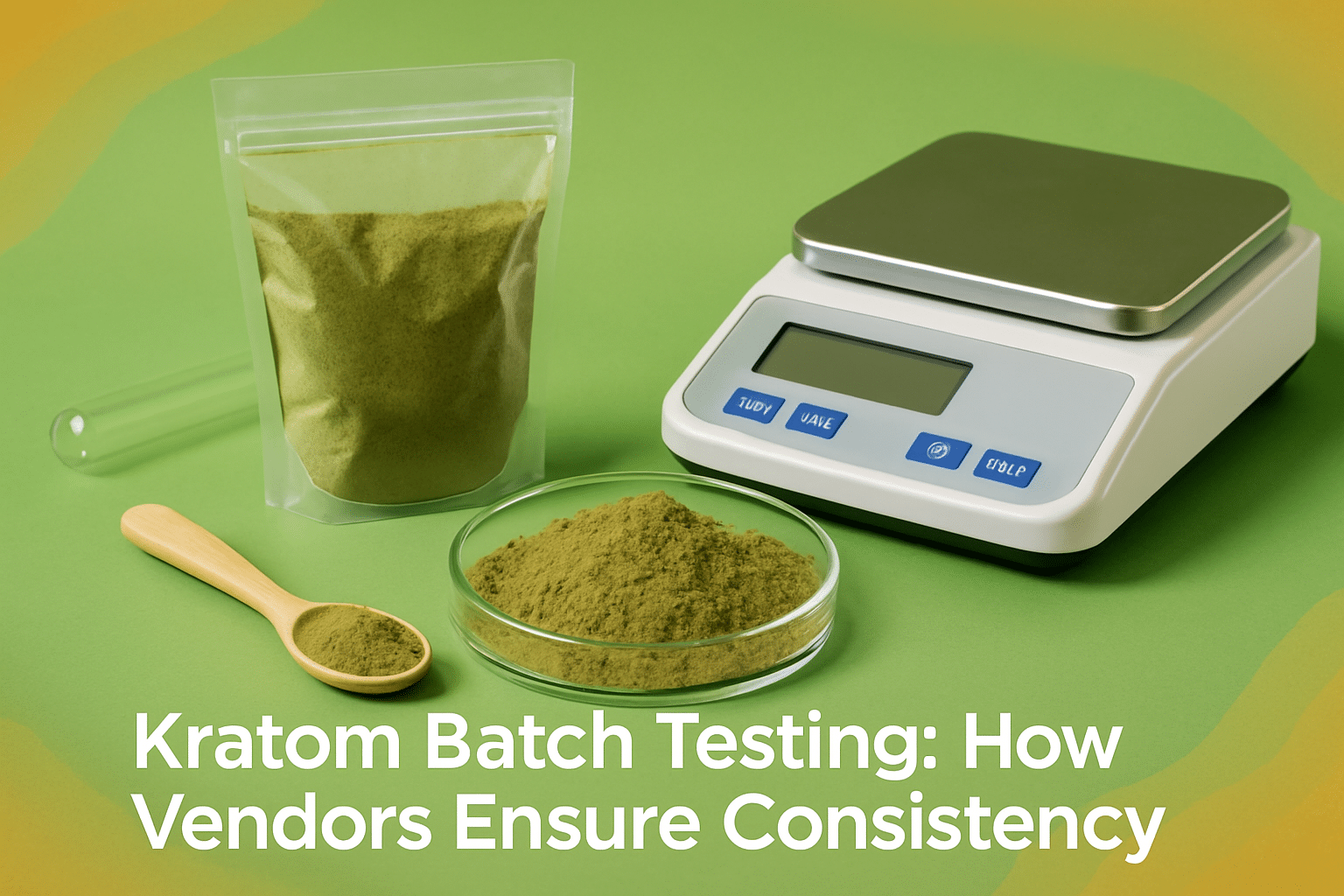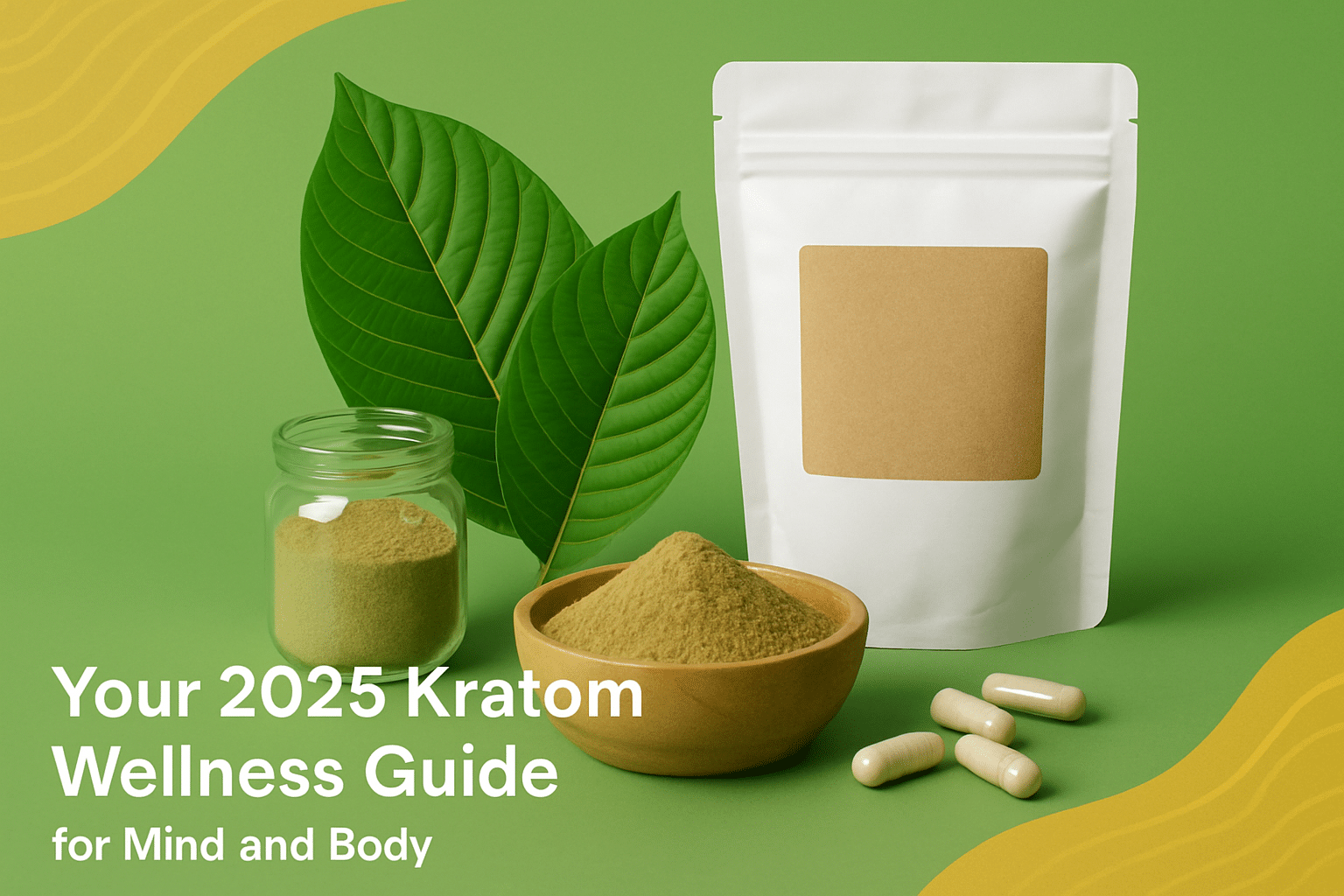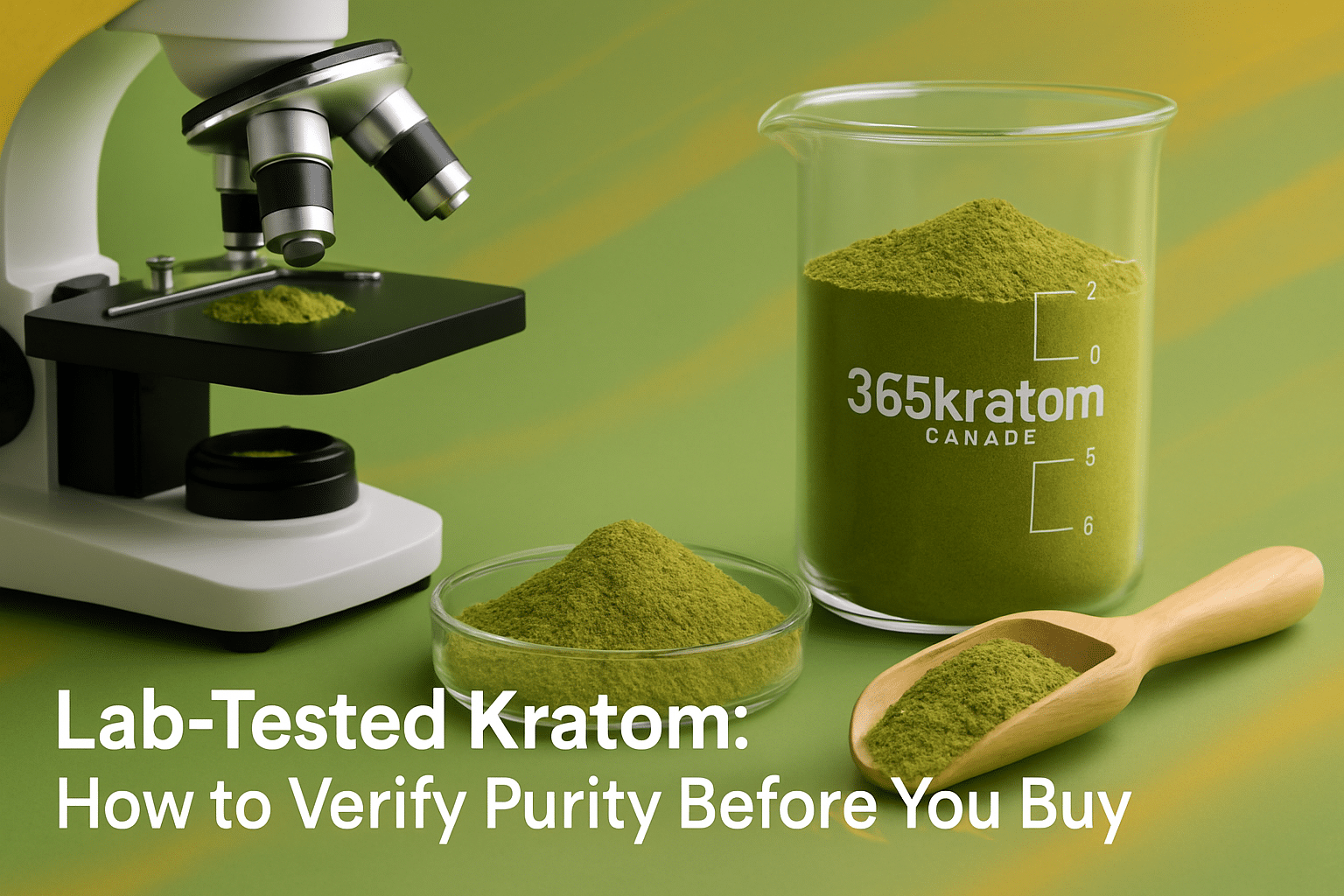Living in Canada, you’ve likely heard about kratom as a botanical product gaining attention for research, aromatherapy, and examination purposes. But here’s what many Canadian consumers don’t realize: the quality and safety of kratom products can vary dramatically between vendors. The difference between high-quality and potentially dangerous kratom often comes down to one crucial factor—comprehensive kratom batch testing. This rigorous process ensures every package you receive meets strict safety and potency standards, protecting both your investment and wellbeing.
Understanding kratom batch testing isn’t just about technical knowledge; it’s about making informed decisions that could impact your experience with these botanical products. From alkaloid content verification to heavy metal screening, proper testing protocols separate reputable vendors from those cutting corners on safety.
Understanding Kratom Testing Protocols and Standards
Laboratory Testing Requirements for Kratom Products
The kratom industry has evolved significantly in recent years, with standardized testing becoming a cornerstone of quality assurance. The American Kratom Association established Good Manufacturing Practice (GMP) standards in 2022, requiring comprehensive lab testing for all kratom batches to ensure safety and quality. While these standards originated in the United States, forward-thinking Canadian vendors have adopted similar protocols to demonstrate their commitment to product excellence.
Pro Tip: Look for vendors who voluntarily implement GMP-style testing protocols even when not legally required—this indicates a genuine commitment to customer safety over profit margins.
Kratom lab testing standards encompass multiple analytical procedures designed to verify both safety and potency. These protocols typically include alkaloid profiling, heavy metal detection, microbial screening, and residual solvent analysis. Each test serves a specific purpose in ensuring the final product meets consumer expectations while eliminating potential health risks.
The testing framework addresses both immediate and long-term safety concerns. Immediate risks include bacterial contamination that could cause acute illness, while long-term considerations focus on heavy metal accumulation that might affect health over extended use periods.
Alkaloid Profiling and Potency Verification Methods
Kratom’s effects stem primarily from its alkaloid content, making alkaloid profiling essential for product consistency and user safety. Research published in 2019 revealed that mitragynine levels in commercial kratom products varied dramatically from 0.39% to 6.28%, highlighting why kratom potency verification has become a critical quality control measure.
Alkaloid content analysis typically focuses on two primary compounds: mitragynine and 7-hydroxymitragynine. Advanced testing methods use High-Performance Liquid Chromatography (HPLC) to precisely measure these alkaloids, ensuring batch-to-batch consistency that consumers can rely on.
Key Takeaway: Consistent alkaloid levels mean predictable experiences—no unwelcome surprises from products that are unexpectedly weak or overpowering.
The verification process involves multiple sample points from each batch to account for natural variations within the raw material. This comprehensive approach ensures the reported alkaloid percentages accurately represent the entire batch, not just a single sample that might not be representative of the whole.
Contaminant Screening for Heavy Metals and Microorganisms
Perhaps the most critical aspect of kratom batch testing involves screening for dangerous contaminants that could pose serious health risks. A 2020 analysis found that 42% of 26 tested kratom products exceeded acceptable limits for nickel, demonstrating why heavy metals in kratom screening has become non-negotiable for responsible vendors.
Kratom contaminant screening methods target multiple categories of potential hazards:
-
Heavy metals: Lead, mercury, cadmium, and arsenic testing using inductively coupled plasma mass spectrometry
-
Microbial contamination: E. coli, Salmonella, yeast, and mold detection through culture-based and molecular methods
-
Pesticide residues: Comprehensive screening for agricultural chemicals that might remain from cultivation
-
Residual solvents: Detection of processing chemicals that should be completely removed during production
Kratom microbial testing has proven especially crucial for consumer safety. The 2018 Salmonella outbreak linked to kratom products affected 199 people across multiple states, underscoring why bacterial screening cannot be overlooked in any comprehensive testing protocol.
How Vendors Implement Batch Testing Procedures
Sample Collection and Chain of Custody Processes
Professional kratom vendors follow strict protocols when collecting samples for testing, ensuring accuracy and preventing contamination during the analysis process. FDA guidance for botanical drug products provides frameworks that vendors can adapt to maintain sample integrity throughout the testing process.
Proper sample collection involves taking representative portions from multiple points within each batch, accounting for potential variations in alkaloid content or contamination levels. These samples undergo chain of custody documentation, tracking every handling step from collection through final analysis results.
The sampling process typically occurs at multiple production stages: raw material intake, post-processing, and final packaging. This multi-point approach helps identify where quality issues might occur, enabling vendors to address problems before products reach consumers.
Pro Tip: Vendors who provide detailed information about their sampling procedures demonstrate transparency and confidence in their quality control systems.
Third-Party Laboratory Partnerships and Certifications
Independence in testing ensures unbiased results that consumers can trust. As of 2023, over 100 laboratories in North America hold ISO/IEC 17025 accreditation for botanical testing, providing kratom vendors with access to certified facilities for third party kratom testing.
Reputable vendors partner with accredited laboratories rather than conducting testing in-house, eliminating potential conflicts of interest. These partnerships ensure testing follows standardized procedures and maintains the highest analytical standards.
Laboratory certifications to look for include:
-
ISO/IEC 17025 accreditation for testing competence
-
FDA registration for food and botanical testing
-
State licensing for analytical chemistry services
-
Specific certifications for kratom or botanical analysis
The choice of laboratory partner often reflects a vendor’s commitment to quality. Established, accredited facilities typically charge higher fees but provide more reliable results than budget alternatives.
Documentation and Certificate of Analysis (COA) Systems
Comprehensive documentation transforms testing from an internal process into a transparency tool that builds consumer confidence. Industry surveys indicate that 75% of botanical product vendors now provide certificates of analysis to demonstrate their commitment to transparency and quality assurance.
A kratom certificate of analysis should include:
-
Complete testing methodology descriptions
-
Specific results for all tested parameters
-
Pass/fail determinations based on established limits
-
Laboratory certification information
-
Batch identification and testing dates
Quality COA systems make this information easily accessible to consumers through QR codes on packaging or online portals where customers can verify results using batch numbers. This transparency allows informed decision-making and builds trust between vendors and consumers.
Effective documentation systems also enable traceability, allowing vendors to track issues back to specific batches if problems arise. This capability proves essential for maintaining consumer safety and demonstrating due diligence in quality control.
Benefits of Kratom Batch Testing for Canadian Consumers
Product Consistency and Predictable Results
Canadian consumers investing in kratom products deserve consistency across purchases, making kratom batch quality control a valuable service rather than just a safety measure. Health Canada’s natural health products guidelines emphasize the importance of standardized botanical products, principles that apply well to kratom quality assurance.
Batch testing ensures that each package delivers similar alkaloid profiles and effects, eliminating the frustration of weak or overpowering products. This consistency becomes particularly important for users who rely on specific alkaloid levels for their intended purposes.
Testing also identifies batches that fall outside normal parameters, allowing vendors to adjust processing or reject substandard material before it reaches consumers. This quality control prevents negative experiences that might discourage continued use.
Key Benefits of Consistent Testing:
-
Predictable alkaloid content across purchases
-
Elimination of surprise variations in quality
-
Confidence in product reliability
-
Better value through consistent performance
Safety Assurance Through Contamination Detection
The contamination detection capabilities of comprehensive testing provide Canadian consumers with crucial safety assurances. Heavy metal accumulation and microbial infections represent serious health risks that proper kratom product safety testing can prevent.
Testing protocols identify dangerous contaminants before products reach consumers, preventing both acute illness from bacterial contamination and long-term health effects from heavy metal exposure. This proactive approach protects consumer health while demonstrating vendor responsibility.
The safety benefits extend beyond individual protection to public health considerations. Rigorous testing helps prevent contamination-related incidents that could impact the entire kratom community’s access to these botanical products.
Contamination screening particularly benefits consumers who use kratom regularly, as even low levels of heavy metals or pesticides could accumulate over time without proper monitoring and control.
Transparency Building Trust Between Vendors and Customers
Modern consumers increasingly value transparency in their purchasing decisions, making detailed testing information a competitive advantage for responsible vendors. Research has shown that transparency in product information significantly influences consumer trust and purchase decisions across botanical product categories.
When vendors like 365 Kratom Canada provide comprehensive lab results for their products, they demonstrate confidence in their quality while empowering consumers to make informed choices. This transparency transforms the vendor-customer relationship from simple commerce to partnership based on shared quality standards.
Testing documentation also provides recourse if quality issues arise. Consumers can reference specific batch data when communicating with vendors about concerns, enabling targeted responses and solutions.
The transparency fostered by thorough testing helps educate consumers about kratom quality factors, improving their ability to evaluate different vendors and make informed purchasing decisions across the Canadian market.
Kratom Vendor Testing Procedures: What Separates Quality Suppliers
Frequency and Scope of Testing Protocols
Leading kratom vendors implement testing at multiple production stages rather than treating it as a final checkpoint. This comprehensive approach catches potential issues early while ensuring consistent quality throughout the supply chain.
Testing frequency varies based on vendor commitment levels:
-
Basic vendors: Test only when required or when issues are suspected
-
Quality-focused vendors: Test every batch with comprehensive panels
-
Premium vendors: Test at multiple production stages with expanded parameters
Forward-thinking Canadian vendors often exceed minimum requirements, testing for additional parameters that demonstrate their commitment to consumer safety and product excellence.
Pro Tip: Ask potential vendors about their testing frequency and scope—responses reveal their true priorities regarding product quality and consumer safety.
Integration with Customer Service and Support
Quality vendors integrate their testing programs with customer service, using lab results to address concerns and provide detailed product information. This integration demonstrates how testing serves customers rather than just fulfilling compliance obligations.
Knowledgeable customer service teams should be able to explain testing procedures, interpret COA results, and address quality-related questions. This capability indicates that testing is genuinely integrated into the vendor’s operations rather than being an afterthought.
Some vendors provide direct access to laboratory personnel for technical questions, showing their commitment to transparency and education. This level of support helps consumers understand the value they receive from comprehensive testing programs.
Frequently Asked Questions
What should I look for in a kratom certificate of analysis?A comprehensive COA should include alkaloid content, heavy metal screening, microbial testing results, testing dates, laboratory information, and clear pass/fail determinations. Look for recent testing dates and accredited laboratory credentials.
How often should kratom batches be tested?Quality vendors test every batch with comprehensive panels including alkaloid analysis, contamination screening, and microbial testing. Some premium vendors also conduct testing at multiple production stages for additional quality assurance.
What are the most important safety tests for kratom products?Essential safety tests include heavy metal screening (lead, mercury, cadmium, arsenic), microbial contamination detection (E. coli, Salmonella, yeast, mold), and alkaloid profiling for consistency. Pesticide residue testing provides additional safety assurance.
Can I trust kratom products without third-party testing?Third-party testing from accredited laboratories provides unbiased results that vendors cannot manipulate. Products without independent testing carry higher risks of contamination, inconsistent potency, or undisclosed adulterants.
How do Canadian kratom testing standards compare to other countries?While Canada doesn’t have specific kratom testing requirements, leading Canadian vendors often adopt standards similar to or exceeding those used in regulated markets. Look for vendors who voluntarily implement comprehensive testing protocols.
What’s the difference between COA and lab report formats?Certificates of Analysis provide summary information with pass/fail determinations, while detailed lab reports include raw data and analytical methods. Both formats should include laboratory credentials and testing methodology information.
How can I verify kratom testing results are legitimate?Legitimate COAs include laboratory contact information, testing dates, specific methodology details, and accreditation numbers. You can often verify results by contacting the testing laboratory directly using the information provided on the certificate.
Conclusion
Kratom batch testing represents the foundation of quality assurance in Canada’s botanical product landscape. From alkaloid content verification to comprehensive contamination screening, these protocols protect consumers while ensuring product consistency and reliability. Understanding what constitutes proper testing empowers Canadian consumers to make informed decisions about their botanical product choices.
The investment in comprehensive testing ultimately benefits everyone involved: consumers receive safer, more consistent products, while vendors build trust and differentiate themselves in a competitive market. As the kratom community continues growing across Canada, testing standards will likely become even more important for maintaining access to these botanical products.
Quality vendors recognize that testing isn’t just about compliance—it’s about building lasting relationships with customers who value transparency and safety. Companies like 365 Kratom Canada demonstrate this commitment through comprehensive batch testing protocols that ensure every product meets the highest standards for purity and potency.
Ready to experience the difference that comprehensive testing makes? Explore 365 Kratom Canada’s lab-tested product collection and discover the confidence that comes from knowing exactly what’s in your botanical products.



